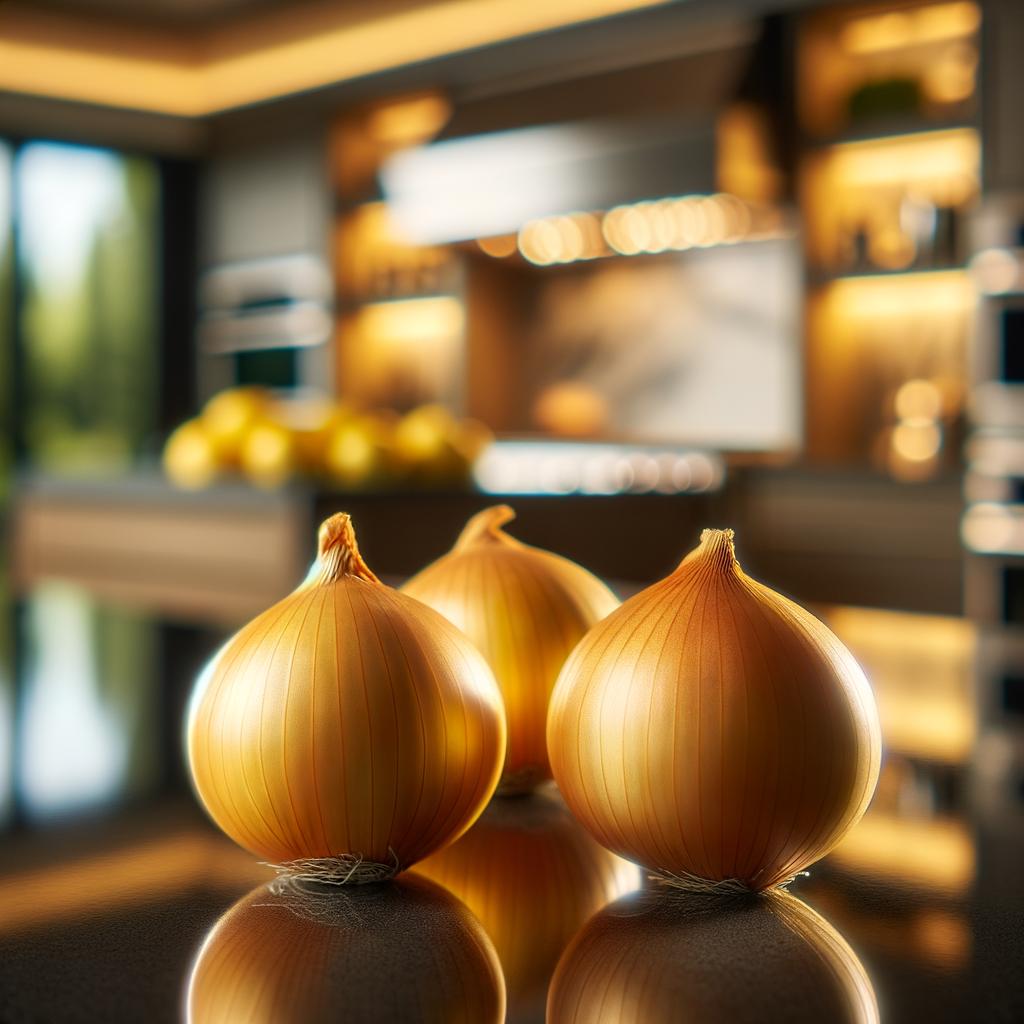Yellow Onions

Description
The yellow onion, or Allium cepa, is a humble yet indispensable ingredient in kitchens worldwide. Its outer skin is a parchment-like sheath, varying from a pale golden hue to a rich, caramel brown. Once peeled, the onion reveals its many layers, each one crisp and juicy, with a color spectrum that ranges from translucent white to a creamy yellow. The texture of a yellow onion is firm and slightly crunchy when raw, but it transforms into a tender, almost melting consistency when cooked. Its flavor profile is complex, boasting a sharp, spicy taste when raw that mellows into a sweet, savory richness upon cooking. The yellow onion's unique ability to transition from pungent to sweet sets it apart from its other onion counterparts.
Primary Uses
Yellow onions are culinary chameleons, providing a flavor foundation for a plethora of dishes across various cuisines. They are often sautéed or caramelized to bring out their inherent sweetness, making them a crucial component in French onion soup, Indian curries, Italian marinara sauce, and American-style meatloaf. Raw, they bring a sharp bite to salads and sandwiches. Beyond the culinary world, yellow onions have been used in traditional medicine as a remedy for colds and respiratory infections due to their high sulfur content.
History
The yellow onion has a rich history that dates back over 5000 years. Originating in Asia, it was revered by the ancient Egyptians who believed its spherical shape and concentric rings symbolized eternal life. During the Middle Ages, onions were used as currency to pay rent or given as gifts. Over time, its use and popularity have evolved, and today, the yellow onion is a staple ingredient in almost every culture's cuisine. There's an intriguing folklore that onions can ward off evil spirits and diseases, and during the Plague, people would carry onions believing they could absorb the disease.
Nutritional Information
Yellow onions are not just flavor powerhouses; they are also packed with nutritional benefits. They are low in calories but high in vitamins and minerals, including Vitamin C, B Vitamins, and potassium. They are rich in antioxidants and contain a good amount of dietary fiber. Yellow onions are known for their high content of quercetin, a flavonoid with potent antioxidant and anti-inflammatory properties. Compared to red or white onions, yellow onions have a higher sulfur content, which contributes to their health benefits, including heart health and cancer prevention. The humble yellow onion, thus, is a testament to the fact that good health and great taste can indeed go hand in hand.

